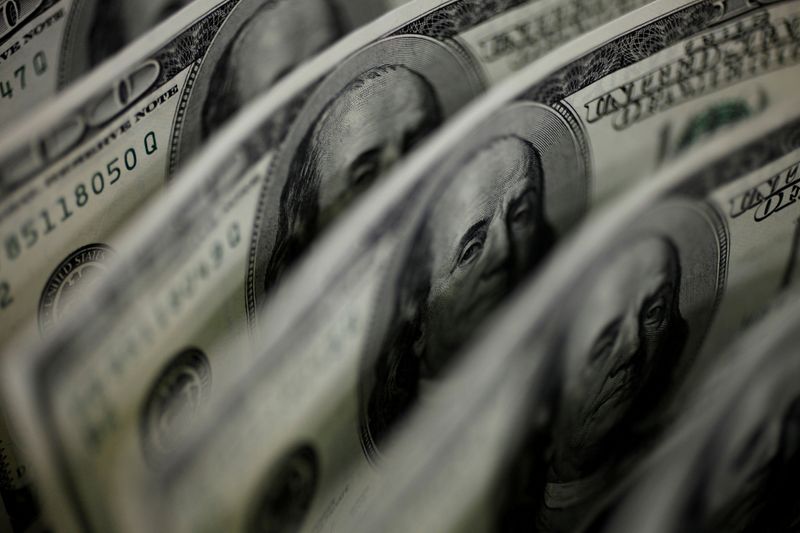By Laura Matthews
New York (Reuters) – The dollar clung to gains against the euro on Monday after recent economic data showed a stronger U.S. economy and a slowing euro zone as traders look beyond a trio of central bank meetings this week for clues to the outlook for monetary policy.
A closely-watched purchasing managers’ survey showed that U.S. business activity slowed to a five-month low in July, dragged down by decelerating service sector growth, but the data was better than similar surveys out of Europe. Falling U.S. input prices and slower hiring indicated the Federal Reserve could be making progress on important fronts in its bid to reduce inflation.
“When you survey the global picture, there are more reasons to be optimistic about the U.S. than almost anywhere else, which translate to the dollar,” said Adam Button, chief currency analyst at ForexLive in Toronto. “The U.S. economy really is the best of a mediocre bunch.”
The euro was down 0.49% at $1.1069 while sterling was last trading at $1.2823, down 0.25% on the day, kicking off a busy week for central bank meetings with investors expecting rate hikes in Europe and the United States.
The dollar index rose 0.247% to 101.330, while futures expect the Fed’s overnight rate will rise to 5.43% in November and stay above 5% until June 2024..
The Japanese yen strengthened 0.24% versus the greenback to 141.47 per dollar.
The Fed concludes a meeting on Wednesday, followed by the European Central Bank (ECB) a day later and the Bank of Japan (BOJ) on Friday, as well as earnings from many heavyweight companies.
Investors expect both the ECB and Fed to raise rates by 25 basis points and the focus in both cases is on the signals they send around their September meetings. Softening inflation gauges might allow the Fed room to hint at a pause.
“The Fed probably won’t raise rates again at its September meeting after this week’s hike, but with the U.S. economy in better shape for now, the euro is bearing the brunt of the broad dollar strength,” said John Velis, head of Americas macro strategy at BNY Mellon (NYSE:BK) Markets in New York.
The BOJ is the most likely of the three central banks to throw up a market-moving surprise, traders say, with a tweak to its yield curve control policy seen as a possibility.
Last Friday the Japanese currency dived to as weak as 141.92 per dollar, also sliding on crosses, following a Reuters report that the BOJ was leaning towards keeping its yield curve control policy unchanged, though volatility gauges have spiked as the meeting looms.
“There’s a deep sense of unease around what might come next from the Bank of Japan,” said ForexLive’s Button.
In cryptocurrencies, bitcoin last fell 2.72% to $29,069.21. Ethereum last fell 2.45% to $1,848.12.



